- Home
- Alison Weir
Mistress of the Monarchy
Mistress of the Monarchy Read online
ALSO BY ALISON WEIR
The Lady Elizabeth: A Novel
Innocent Traitor: A Novel of Lady Jane Grey
Britain’s Royal Families: The Complete Genealogy
The Six Wives of Henry VIII
The Princes in the Tower
The Wars of the Roses
The Children of Henry VIII
The Life of Elizabeth I
Eleanor of Aquitaine
Henry VIII: The King and His Court
Mary, Queen of Scots, and the Murder of Lord Darnley
Queen Isabella
THIS BOOK IS DEDICATED TO
Bruce and Sandy,
Peter and Karen,
AND
John and Joanna
TO MARK THEIR MARRIAGES.
ACKNOWLEDGMENTS
Ishould like to express my warmest gratitude to various people who have helped with this book. To Anthony Goodman, our finest late medieval historian, for his assistance with references and original documents; I am also indebted to him for his two booklets, Katherine Swynford and Honourable Lady or She- Devil?, and his magnificent collection of essays on John of Gaunt, which have all proved profoundly useful. To Dr. Nicholas Bennett, Librarian of Lincoln Cathedral Library, and his wife Carol for their kindness in welcoming me to the library, making available various sources, and arranging a visit to the Priory, where Katherine Swynford lived toward the end of her life. To Roger Joy, founder of the Katherine Swynford Society and a walking authority on Katherine, for generously sharing his knowledge with me, and for sending me his unpublished articles. To Patricia McLeod and the staff of Sutton Library for their efforts in tracking down numerous books and articles. To Abigail Bennett of the University of York, for translating into English numerous texts in medieval Latin. To Andrew Barr and his team at the National Trust East Midlands Regional Office. To the staff at Lincoln Central Library for their assistance in locating books.
I am indebted also to the many people who have published information about Katherine on the Internet, foremost among whom is Judy Perry, who has been researching her subject for over twenty- five years.
My gratitude to my editors for commissioning this book is acknowledged separately, in the Introduction, but I should also like to express it here on account of their unflagging enthusiasm, their sensitive insights, and their illuminating input. I wish also to thank my inspirational and ever- supportive agent, Julian Alexander, and all the people at Random House who have helped to create this book.
Lastly, I wish to thank my family and friends, who have all cheerfully put up with me while the book was being written. And to Rankin, my husband—thanks for all the wonderful meals, and just for being there.
CONTENTS
ACKNOWLEDGMENTS
AUTHOR’S NOTE
INTRODUCTION
PROLOGUE
Spring 1378
ONE
Panetto’s Daughter
TWO
The Magnificent Lord
THREE
The Trap of Wedding
FOUR
Mistress of the Duke
FIVE
Blinded by Desire
SIX
His Unspeakable Concubine
SEVEN
Turning Away the Wrath of God
EIGHT
The Lady of Kettlethorpe
NINE
My Dearest Lady Katherine
TEN
The King’s Mother
APPENDIX
Anya Seton’s Katherine
GENEALOGICAL TABLES
NOTES AND REFERENCES
SELECT BIBLIOGRAPHY
READER’S GUIDE
EXCERPT FROM THE LADY IN THE TOWER
Excerpt from Mary Boleyn
ABOUT THE AUTHOR
AUTHOR’S NOTE
I have used the form “Katherine” (rather than “Catherine”) throughout, as Katherine’s name is usually spelled with a K in contemporary sources.
The correct medieval form of her name is “Katherine de Swynford,” but I have chosen to refer to her as “Katherine Swynford,” as she is traditionally and popularly known. It is worth noting that in John of Gaunt’s Register, Katherine’s name is given as either “Katherine” or “Kateryn(e).” The language of the court and the aristocracy at this time was Norman French, and these spellings indicate that John—and others—probably pronounced her name in the French way as “Katrine.”
The modern equivalent of fourteenth- century monetary values has been given in parentheses throughout the book. For currency conversion, I have used an invaluable Internet website, measuringworth.com, produced by Lawrence H. Officer, professor of Economics at the University of Illinois, Chicago, and Samuel H. Williams, professor of Economics, emeritus, of Miami University.
INTRODUCTION
This is a love story, one of the greatest and most remarkable love stories of medieval England. It is the extraordinary tale of an exceptional woman, Katherine Swynford, who became first the mistress and later the wife of John of Gaunt, Duke of Lancaster, one of the outstanding princes of the high Middle Ages.
Katherine Swynford’s story first captured my imagination four decades ago, when I read Anya Seton’s famous novel about her, Katherine. This epic novel made a tremendous impact on me as an adolescent, and still has the power to move me today. And I am not alone, because it has hardly been out of print since its first publication in 1954, and ranked ninety- fifth in the top one hundred favorite books voted for by the public in BBC TV’s “The Big Read” in 2003. (Interested readers will find more about this novel in the Appendix.)
It would not be an exaggeration to say that I have wanted to write this book for forty years. But even when I became a published author in the late eighties, no publisher would have contemplated commissioning a biography of this relatively obscure woman. And that remained the situation for many years, until the recent explosion of interest in all things historical, which inspired me to seize the chance to make my longstanding secret dream come true. I am truly indebted to my editors, Will Sulkin, Anthony Whittome, and Susanna Porter, for their support and enthusiasm for this project, and to Elisabeth Dyssegaard, who suggested that I write about Katherine as well as John of Gaunt, the subject I originally proposed.
Katherine Swynford deserves a biography for many reasons. First and foremost, she was romantically linked to John of Gaunt, one of the most charismatic figures of the fourteenth century, and their passionate and ultimately poignant love affair is both astonishing and moving. Katherine was clearly beautiful and desirable, not to say enigmatic and intriguing, and some of her contemporaries regarded her as dangerous also. Her existence was played out against a vivid backdrop of court life at the height of the age of chivalry, and she knew most of the great figures of the epoch. The renowned poet Geoffrey Chaucer, author of The Canterbury Tales, was her brother- in-law. She lived through the Hundred Years War, the Black Death, and the Peasants’ Revolt, knew passion, loss, adversity, and heartbreak, and survived them all triumphantly. Her story gives us unique insights into the life of a medieval woman.
Yet Katherine was unusual in that she did not conform to many of the conventional norms expected of women in that age, and in several respects her story has relevance for us today. Feminist scholars are now beginning to see her from a new perspective, as a woman who was an important personage in her own right, a woman who—in a male- dominated age—had remarkable opportunities, made her own choices, flouted convention, and took control of her own destiny. Katherine was intelligent, poised, and talented, and fortunate enough to move in circles where these qualities were valued and encouraged in women. Among the choices she faced were ones that would be familiar to women today, although her modern counterparts
would not have to endure the moral backlash that at one time rebounded on Katherine and probably wrecked her life. Yet they would identify with her as a woman who coped brilliantly with the sweeping, and sometimes devastating, changes of fortune that befell her.
Above all, Katherine Swynford occupies an unprecedented position in the history of the English monarchy; dynastically, she is an important figure. She was the mother of the Beauforts, and through them the ancestress of the Yorkist kings, the Tudors, the Stuarts, and every other British sovereign since—a prodigious legacy for any woman. Without her, the course of En glish history would have been very different.
writing a biography of Katherine Swynford poses its own particular problems, however, for her voice has been silenced forever: No letter survives, no utterance of hers is recorded. None of her movable goods are extant, and we have barely any details of the clothes she wore, so we cannot determine her tastes in art, literature, or dress. Her will is lost, and with it any insights it might give us into her feelings for John of Gaunt, her moral outlook, her family relationships, or her charities. She is one of the most important women in late fourteenth- century England, and yet so much about her is a mystery to us. She is famous but, paradoxically, she is little known.
Furthermore, the contemporary sources to support a biography of Katherine Swynford are meager and fragmentary at best. She rates barely a mention in the chronicles of the period, and such references as there are, usually reflect monastic prejudice against a woman who was regarded as “a she- devil and enchantress.” The best evidence for her life lies mainly in the dry entries in John of Gaunt’s Register, the Calendar of Patent Rolls, the Duchy of Lancaster Records in the National Archives, and the civic and clerical records of Lincoln, Leicester, and other places. The rest is largely inference. Yet there is a wealth of evidence on which to base those inferences, as will be seen. There is monetary evidence, and archaeological evidence. Much remains of the many castles and manor houses owned by John of Gaunt, in which Katherine would often have resided, not the least of which is his magnificent range and great hall at Kenilworth, which she would have known well. Houses in which she herself lived for long periods—Kettlethorpe Hall in Lincolnshire, and the Chancery and the Priory in the close of Lincoln Cathedral—also survive in part. There is, in addition, much surviving documentation on John of Gaunt’s fabulous but long- lost Savoy Palace, so it is possible to place Katherine and her prince in the context of vividly recreated authentic settings.
So although there is a great deal that is not known about Katherine Swynford, and the tantalizing glimpses of her that appear in the sources often raise more questions than they answer, there is enough to justify a long overdue biography. This book therefore represents a quest to discover the truth about this most intriguing of royal ladies. It has led to the most fascinating historical investigation I have ever undertaken, affording unique opportunities for original research, which has encompassed delving into numerous contemporary sources (and in some cases having them retranslated), following up significant clues—sometimes into unexplored territory— examining the remains of the houses in which Katherine lived, interpreting intriguing allusions in stained glass and ancient manuscripts, and studying a wealth of pictorial evidence.
In drawing up a detailed chronological framework for Katherine’s life, then piecing together the myriad pieces of information I had gathered and analyzing them within the context of that framework, I was surprised by the interesting revelations that emerged, some of which challenge the received wisdom about my subject, or lend weight to existing theories. Time and again I was surprised at what I have been able to infer from my research. It is, above all, my hope that what will unfold in the pages that follow is a convincing and challenging portrayal of a most fascinating—but elusive— woman.
ALISON AEIR
CARSHALTON, SURREY
APRIL 2007
PROLOGUE
Spring 1378
In March 1378, putting aside “all shame of man and fear of God,” John of Gaunt, Duke of Lancaster, the mightiest subject in the realm of En gland, was to be seen riding around his estates in Leicestershire “with his unspeakable concubine, a certain Katherine Swynford.” Not only was the Duke brazenly parading his beautiful mistress for everyone to see, but he was “holding her bridle in public,” a gesture that proclaimed to all his possession of her, for it implied that the rider thus led was a captive, in this case one who had surrendered her body, if not her heart. And as if this were not shocking enough, the fact that the Duke was flaunting his mistress “in the presence of his own wife” created a scandal that would soon spread throughout the length and breadth of the kingdom and beyond. Even today, echoes of that furor still reverberate in the pages of history books.
John of Gaunt’s conduct in that long distant spring led disapproving contemporaries to conclude that he had “made himself abominable in the eyes of God,” and that Katherine Swynford was “a witch and a whore.” Thus was born the legend of the “famous adulteress” who occupies a unique place in English history. There can be no doubt that in her own lifetime she was the subject of great scandal and notoriety, for she was closely linked to John of Gaunt for a quarter of a century before they married, and had already known him for many years before he wed the desirable young wife who was so openly insulted on that tour of Leicestershire in 1378. Years later, after John’s wife had died and he married Katherine, controversy and criticism surrounded their union, for she was far below him in status, morally unacceptable, and considered highly unsuitable in many respects. But she confounded her critics and gradually came to be tolerated and even respected.
Indeed, all the evidence suggests that Katherine Swynford was no lightly principled whore, which is what hostile chroniclers would have us believe; on the contrary, she was one of the most important female figures of the late fourteenth century, and more likely to have been a woman deserving of our admiration and esteem. Her partner in adultery—later her husband—was the son of King Edward III of England and one of the epoch’s most famous and celebrated paragons. From her is descended every English monarch since 1461, and no fewer than five American presidents.
The truth about Katherine Swynford has been obscured by people down the centuries accepting at face value the calumnies that were written about her by a few disapproving contemporaries; and too because nearly every aspect of her story is shrouded in mystery, exaggerated by debate, or simply obliterated by time. Nearly everything about her is controversial. When and where was she born? What did she look like? How many children did she bear? When did she become John of Gaunt’s mistress? What influence did she have? And what was the nature of their relationship over the years? Above all, did she really deserve all the moral opprobrium heaped upon her after her lover paraded her in public on that fateful spring day?
We will never know the whole truth about Katherine and John, for only echoes of their voices and their deeds have come down to us, but one thing is certain, and it shines forth from nearly every source: These two were lovers, and their love endured through prosperity and adversity, war and endless separations, time and distance. Love and destiny brought them together, sealing their fate and changing the course of English history itself. So this is, essentially, a love story.
ONE
Panetto’s Daughter
Katherine Swynford, that “famous adulteress,”1 was set on the path to notoriety, fame, and a great love at the tender age of two or thereabouts, when she was placed in the household of Philippa of Hainault, wife to Edward III of England. This would have been around 1352, and Katherine’s disposition with the popular and maternal Philippa was almost certainly due to her father, Sir Paon de Roët, having rendered years of faithful service to the Queen and the royal family of Hainault.
Like her benefactress, Katherine was a Hainaulter. She was born Katherine de Roët, her surname variously given as Rouet, Roëlt, or Ruet, and pronounced “Roay.” The Roëts were a prominent family in Hainault, then an in
dependent principality located in the western reaches of the Holy Roman Empire, bordering on the kingdom of France and occupying much of what is now Belgium. This fertile and prosperous county stretched from Liège and Brussels in the north to Lille and Valenciennes in the south, and contained other thriving cloth cities: Mons, Charleroi, and Tournai; all of which provided a market for England’s raw wool, her chief export. Formed at the time of the division of Charlemagne’s empire in the ninth century, Hainault had been an imperial fief since 1071, and in the early fourteenth century it was ruled by the House of Avesnes, which had come to power in 1244.
Katherine possibly had noble or even royal connections through her mother, but claims that she was closely related through her father to the aristocratic lords of Roeulx cannot be substantiated. The Roeulx were a great and powerful Hainaulter family that could trace its descent from the ancient counts of Flanders and Hainault, who were themselves descended from the Emperor Charlemagne, and from England’s famous King Alfred. William the Conqueror had married a princess of that house, Matilda of Flanders, and by her was the founder of the ruling dynasties of England, the Norman and Plantagenet kings. Since the twelfth century the lords of Roeulx had prospered mightily.2 Their landholdings centered mainly on the town of Le Roeulx, which lies eight miles northeast of Mons, but their name is also associated with Roux, forty miles east of Mons, and Fauroeulx, twenty miles to the south.

 Richard III and the Princes in the Tower
Richard III and the Princes in the Tower Britain's Royal Families: The Complete Genealogy
Britain's Royal Families: The Complete Genealogy The Lady in the Tower: The Fall of Anne Boleyn
The Lady in the Tower: The Fall of Anne Boleyn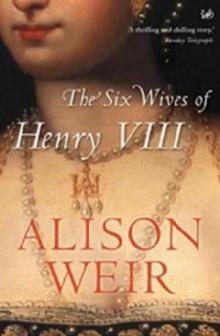 Six Wives of Henry VIII
Six Wives of Henry VIII Elizabeth of York: A Tudor Queen and Her World
Elizabeth of York: A Tudor Queen and Her World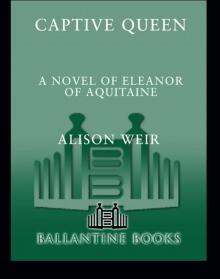 Captive Queen
Captive Queen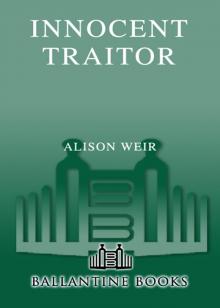 Innocent Traitor
Innocent Traitor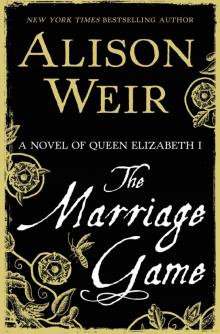 The Marriage Game
The Marriage Game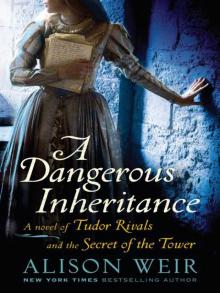 A Dangerous Inheritance
A Dangerous Inheritance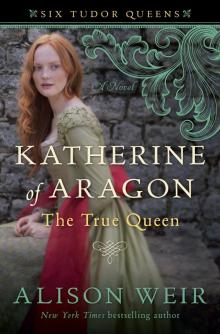 Katherine of Aragón: The True Queen
Katherine of Aragón: The True Queen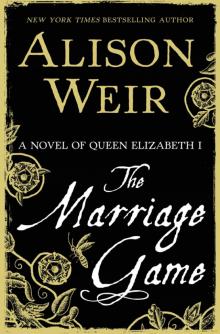 The Marriage Game: A Novel of Queen Elizabeth I
The Marriage Game: A Novel of Queen Elizabeth I Princes in the Tower
Princes in the Tower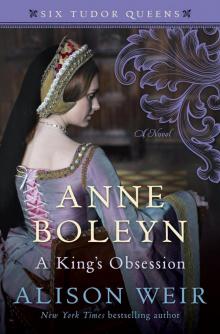 Anne Boleyn: A King's Obsession
Anne Boleyn: A King's Obsession Traitors of the Tower
Traitors of the Tower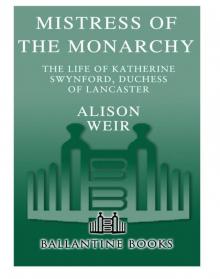 Mistress of the Monarchy: The Life of Katherine Swynford, Duchess of Lancaster
Mistress of the Monarchy: The Life of Katherine Swynford, Duchess of Lancaster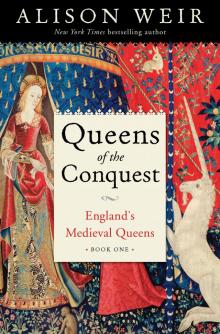 Queens of the Conquest: England’s Medieval Queens
Queens of the Conquest: England’s Medieval Queens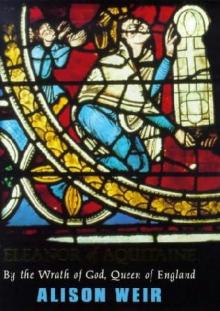 Eleanor of Aquitaine: A Life
Eleanor of Aquitaine: A Life Mary, Queen of Scots, and the Murder of Lord Darnley
Mary, Queen of Scots, and the Murder of Lord Darnley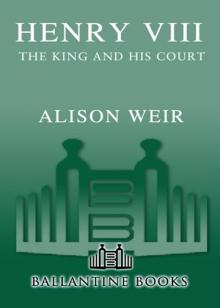 Henry VIII: The King and His Court
Henry VIII: The King and His Court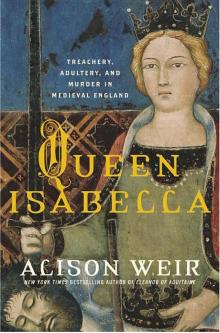 Queen Isabella: Treachery, Adultery, and Murder in Medieval England
Queen Isabella: Treachery, Adultery, and Murder in Medieval England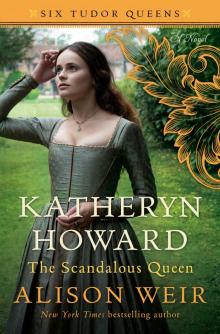 Katheryn Howard, the Scandalous Queen
Katheryn Howard, the Scandalous Queen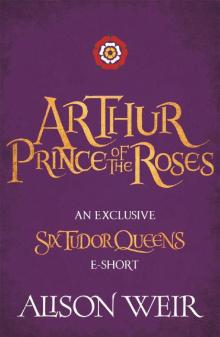 Arthur- Prince of the Roses
Arthur- Prince of the Roses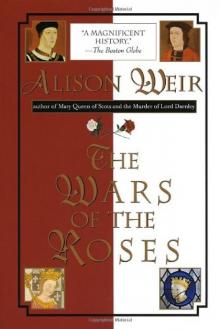 The Wars of the Roses
The Wars of the Roses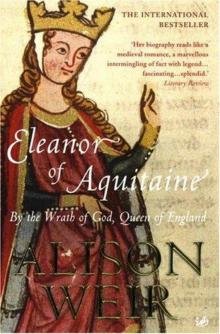 Eleanor of Aquitaine: By the Wrath of God, Queen of England
Eleanor of Aquitaine: By the Wrath of God, Queen of England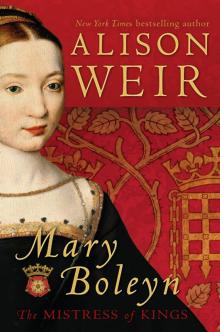 Mary Boleyn: The Great and Infamous Whore
Mary Boleyn: The Great and Infamous Whore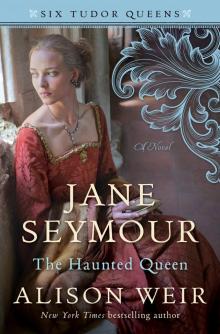 Jane Seymour: The Haunted Queen
Jane Seymour: The Haunted Queen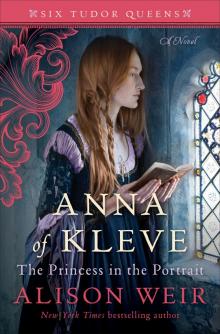 Anna of Kleve, the Princess in the Portrait
Anna of Kleve, the Princess in the Portrait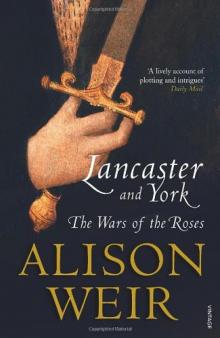 Lancaster and York: The Wars of the Roses
Lancaster and York: The Wars of the Roses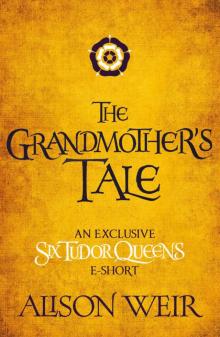 The Grandmother's Tale
The Grandmother's Tale The Princess of Scotland (Six Tudor Queens #5.5)
The Princess of Scotland (Six Tudor Queens #5.5)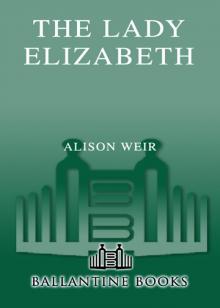 The Lady Elizabeth
The Lady Elizabeth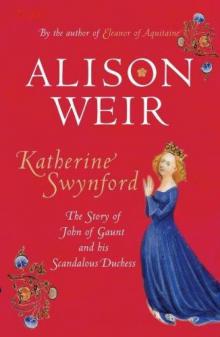 Katherine Swynford: The Story of John of Gaunt and His Scandalous Duchess
Katherine Swynford: The Story of John of Gaunt and His Scandalous Duchess The Curse of the Hungerfords
The Curse of the Hungerfords The Lost Tudor Princess: The Life of Lady Margaret Douglas
The Lost Tudor Princess: The Life of Lady Margaret Douglas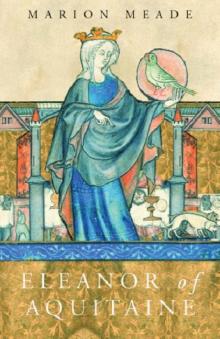 Eleanor of Aquitaine
Eleanor of Aquitaine Mistress of the Monarchy
Mistress of the Monarchy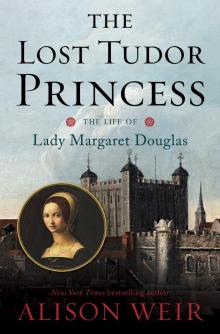 The Lost Tudor Princess
The Lost Tudor Princess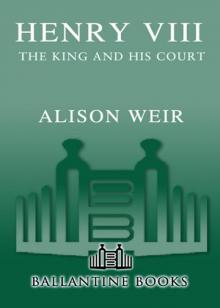 Henry VIII
Henry VIII Anne Boleyn, a King's Obsession
Anne Boleyn, a King's Obsession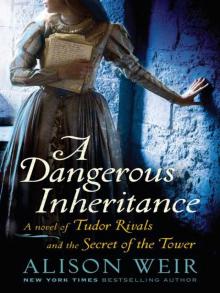 A Dangerous Inheritance: A Novel of Tudor Rivals and the Secret of the Tower
A Dangerous Inheritance: A Novel of Tudor Rivals and the Secret of the Tower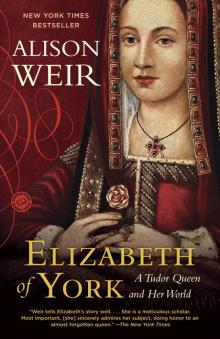 Elizabeth of York
Elizabeth of York Katherine of Aragon, the True Queen
Katherine of Aragon, the True Queen Katherine Swynford
Katherine Swynford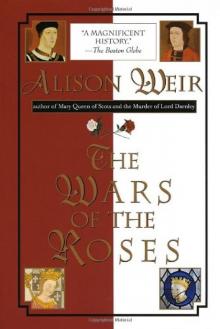 Wars of the Roses
Wars of the Roses Queens of the Conquest
Queens of the Conquest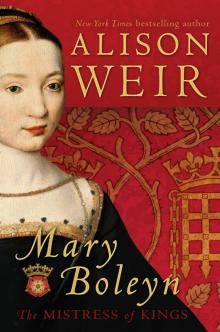 Mary Boleyn
Mary Boleyn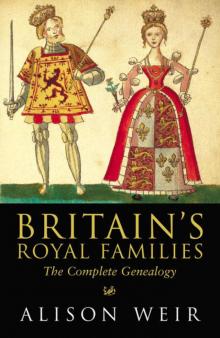 Britain's Royal Families
Britain's Royal Families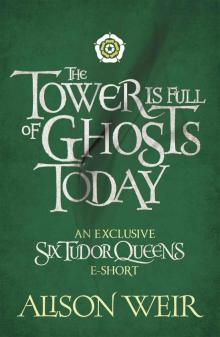 The Tower Is Full of Ghosts Today
The Tower Is Full of Ghosts Today Life of Elizabeth I
Life of Elizabeth I Anne Boleyn A King's Obssession
Anne Boleyn A King's Obssession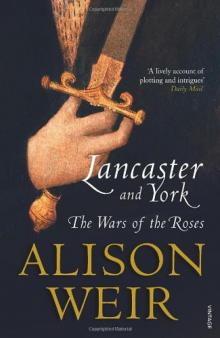 Lancaster and York
Lancaster and York Jane Seymour, the Haunted Queen
Jane Seymour, the Haunted Queen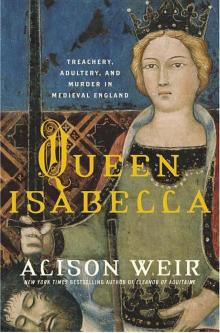 Queen Isabella
Queen Isabella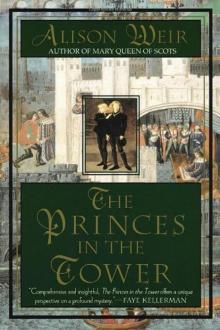 The princes in the tower
The princes in the tower